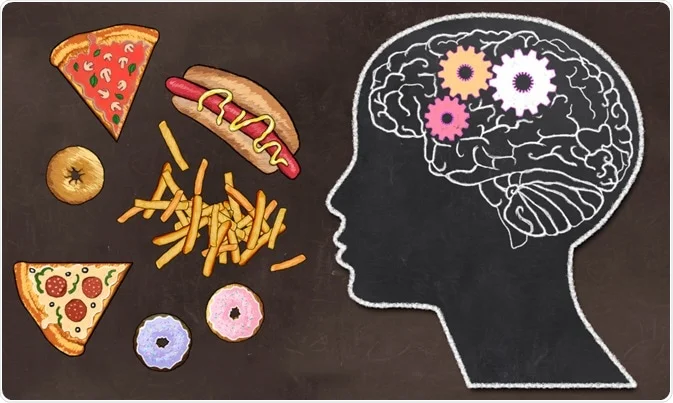Binge eating disorder and alcohol abuse
The national Eating disorder society, NEDA estimates that 50 percent of those with eating disorders have a problem drinking. About 30 million Americans have some sort of food-related illness. The most common alcoholic -related eating disorder is Bulimia. Like alcoholism disorder, eating disorders are common in individuals from diverse backgrounds and have a significant impact upon mental and physical health.
What’s the connection between drinking and eating disorders?
Alcohol problems can be frighteningly frequent with those whose consumption is binge drinking. Several recent studies show the comorbidities are caused by genes, impulsive behavior’s, and the desire for a break.
The relationship between alcohol and eating disorders On the surface, eating disorders and alcohol abuse may appear to be two entirely different conditions. However, the two illnesses have similarities that help to explain why they tend to occur together. First of all, the root of addiction and of eating disorders is that these behaviors function as an escape from underlying stress, anxiety, depression
Anorexia and alcohol use
Anorexia disorders are characterized by depression and resentment and carry similar symptoms. The most commonly observed symptoms are poor food intake and weight fluctuations. People suffering from anorexia can sometimes even eat food purgation or are extremely anxious about eating certain food groups. Alcohol can cause weight loss if consumed excessively and calories can cause a slowing down of metabolism. This may explain the lower incidence of drinking during the first week of anorexia. Although alcohol has intoxicating effects, it can be helpful in people with a chronic condition like anorexic.
Drunkorexia leads to higher rates of these serious health concerns compared to people who drink and eat an appropriate amount of food beforehand. Blackouts Alcohol poisoning Hypoglycemia Alcohol-related brain damage In the long term, the risk for alcohol-related health conditions is increased, such as Liver disease Osteoporosis Cardiac problems Diabetes Dementia Students engaging in this dangerous behavior are also at increased risk for unprotected sex, sexual assault.

Treatment implications
Several studies have suggested in recent years that a disorder like alcoholism can cause bulimia in adults and children, and may be related to bulimia. Several people describe feelings of ‘craving’ or “losing control” in relation to substance (i.e., alcohol or food). A third disorder causes ill health or impairment in the body’s mental health, it is possible that it involves a deceit or a secrecy. The addiction model for eating disorders (1991) helped to suggest that eating disorders can respond to similar treatment options.
Eating Disorders
Most people suffer from anorexia nervosa and bulimia nerviva when it occurs. It’s primarily a problem of the young and, in general, the onset of the disorder occurs from late childhood to mid childhood. Only 10 percent of dietary disorders occur among men. Since gender attributions dominate research studies mainly on eating disorders affecting females only. The report thus mainly deals with studies of women with eating disorders. In most people eating disorders are clinically diagnosed and very rare.
According to the National Eating Disorders Association (NEDA), almost 50 percent of people with an eating disorder also have a substance use disorder. This amount is five times more than the general population
What are eating disorders?

Eating disorder is an illness which involves an unhealthy diet that affects mental health and can lead to serious problems in life. Anorexia nervosa is the most deadly mental disease in the world and is often associated with major depression or anxiety. Eating disorders occur from several environmental, genetic, social, and cultural influences. Food intake is also another way to control stress.
BED is the most common eating disorder in the United States, where about 3.5% of women and 2% of men have the illness. Binge drinking is also common in the United States.
Why is alcohol consumption so common in people with eating disorders?
In a lot of ways, food plays an equal role as alcohol. These two tools work together to relieve stress. In the same way as with substance use, people who have eating disorder often experience neglect, abuse, or trauma. It can help to control weight to deal with resulting distressing emotional situations. Eating problems can arise anywhere in the human life but usually occur in teens and young adulthood.
Addictive personalities are predisposed to both eating disorders and alcohol abuse, increasing the likelihood that the two co-occur. Recovery is possible We encourage all individuals currently struggling with eating disorder behaviors and substance use problems to seek help.
Methods of Escape from Binge Eating and Binge Drinking
Most of those who drink or eat heavily consume alcohol a year or more — this figure is five times higher for adults and for those suffering from restricted type eating disorders. It’s also certainly in binges and purges. The vast majority of research about the use of binging foods and binging alcohol is limited to BEM. It is now classified as a separate eating disorder by the book DSM-5.
Bulimia and alcohol use
Bulimia is a common food and drug averse illness. Bulimia is an eating disorder where the majority of people with bulimia consume an over-the-counter diet in one short period. They may experience weight loss and some negative health impacts. Like people using alcohol, bulimia’s are usually very impulsive and are often addicted to binge and purging foods.
Relationship Between Alcohol and Eating Disorders
It’s very possible alcohol causes an eating disorder. Alcohol is generally presumed to reduce consumption by the person and therefore increase the consumption. Research has shown that alcohol abuse disorder often occurs together with eating disorders, and is often used by people experiencing unhealthy eating disorders.
Anorexia Nervosa And Alcohol Use Disorders
Anorexia nervosa can be described as a refusal of weight loss in the age group and height. Anorexia can also occur in two subtypes: The restricting type is characterized by strict, extreme dieting and the binge eating/purging type that are identified by episodes of self-induced binge eating or purging by vomiting and diarrhea. People with anorexia display severely distorted physical appearance and view themselves as overweight even though they are overweight but often deny their unhealthy weight.
Bulimia Nervosa And Alcohol Use Disorders
Bulimia nervosa is an eating disorder that occurs when eating multiple foods simultaneously and then purging to counter the effect of binge ingest. Those suffering from bipolar disorder frequently exercise extreme weight-management to compensate for the excess of calorie intake. Many people suffering from bulimia are binging a combination of alcoholic foods and alcohol and then purging both.
Alcohol Addiction
Researchers from Loyola University Chicago recruited eight women and seven men to take part in a binge drinking experiment. They gave the participants four to five shots of vodka—enough to qualify as binge drinking. The researchers took blood samples from the participants three times after they reached peak intoxication. Twenty minutes after hitting their booze high, the participants’ immune systems were actually stronger than normal. They had higher counts of three white blood cells and more cytokines, special proteins that accompany immune activity.
Two hours later, however, this trend had reversed. The white blood cells had cleared out, and a new type of cytokines—ones that signal a decrease in immune activity—had appeared in the participants’ blood. At five hours after peak intoxication, the researchers found that the participants still suffered from a depressed immune system.
The scientists plan to follow up this study by visiting burn units at hospitals and seeing whether or not patients recover differently based on the presence of alcohol in their bloodstream.






